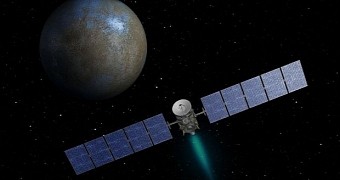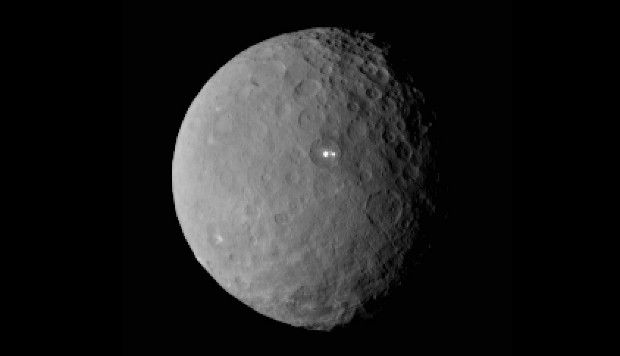Later this week, NASA's Dawn spacecraft will finally complete an epic space journey. Come Thursday, March 5, the probe will at long last reach dwarf planet Ceres and place itself in its orbit.
Mission scientists say that, should all go as planned, the spacecraft will get close enough to its target to get pulled in by its gravity sometime late at night. Well, late at night for us here on Earth.
Once in its orbit, the probe will get to work studying the dwarf planet's anatomy. The spacecraft could help explain the craters on Ceres' surface, maybe detect seas or oceans that might be buried inside it.
The encounter should be a smooth one
Space tells us that mission scientists plan to simply let Dawn creep up on Ceres. When close enough to the dwarf planet, the probe should simply get caught in its gravitational pull.
In fact, it appears that NASA specialists have for some time now been adjusting Dawn's trajectory to make sure that it matches its target's orbit. This should make it easier for Ceres' gravity to grab hold of it.
Apart from placing the probe in the dwarf planet's way and well within its reach, researchers must make sure that, when finally face to face with its target, the spacecraft will be moving slow enough for Ceres' gravity to trap it.
What's the deal with Ceres anyhow?
Ceres circles the Sun between the orbits of Mars and Jupiter. It is estimated to measure about 590 miles (950 kilometers) across, which makes it the largest object in our Solar System's so-called asteroid belt.
Prior to heading for Ceres, NASA's Dawn spacecraft spent a little over a year exploring Vesta, a celestial body that has a diameter of about 330 miles (530 kilometers) and that is also located in the asteroid belt.
Unlike Vesta, which is a rather dry place, Ceres appears to accommodate for water in the form of ice on its surface. Some even believe that an entire ocean might be lurking deep inside it. By studying this dwarf planet, astronomers hope to better understand the formation of our cosmic home.
The mission is all the more exciting seeing how, although discovered by an Italian astronomer named Giuseppe Piazzi in 1801, Ceres is not very well known. In fact, scientists are clueless about what the bright spots visible on its surface might be.
“We know so much about the solar system and yet so little about dwarf planet Ceres. Now, Dawn is ready to change that,” astronomer Marc Rayman said not long ago.

 14 DAY TRIAL //
14 DAY TRIAL // 

